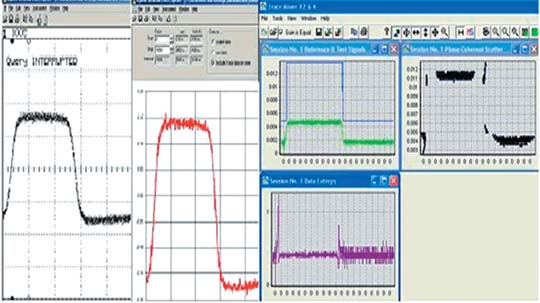| 2005 |

|
YEAR BOOK |
Institute of Technology Carlow
|
Development of data-entropy and data-scatter analysis techniques for optical telecommunications signal analysis at IT Carlow
|
In optical telecommunications there is a variety of ways of analysing physical layer signal quality. To ensure reliable information transmission over a network, industry standards specify performance requirements for the physical layer. These requirements make sure that when one side sends a 1-bit, it is received by the other side as a 1-bit, not as a 0-bit. For optical physical layer analysis a number of techniques such as Bit Error Rate (BER) testing, Q-Factor analysis, Time-Domain Transmission (TDT), eye-diagram and OTDR analysis are used to assess signal and system quality.

Using an oscilloscope with a data acquisition facility, signals may be captured from a telecommunications network. PCDS can then be used to quantify levels of attenuation, dispersion and jitter in these optical telecommunications signals. The data-entropy quality-budget is used as an alternative to the conventional power-budget. The traditional power budget approach is not capable of allowing analysis of a system with different noise types and specifically providing a measure of signal quality. The data-entropy budget, on the other hand, is able to handle diverse forms of noise. This is achieved by applying the dimensionless 'bit measure' in a quality-budget to integrate analysis of all types of noise and losses.
Both approaches have been integrated into the TraceMiner software and this application produces both quantitative and qualitative information based on an algorithmic comparison of reference and test signals. Using the software's functionality the techniques can be applied for:
-
�Input/output testing to measure signal degradations from quantifications of features in the PCDS plot.
-
�Optimization of systems currently in operation for best system performance.
-
�Component performance analysis, for system components that must be checked after manufacturing.
-
�Testing hardware in the network and for fault testing.
Contact: James Egan, Department of Computing and Networking,
Institute of Technology Carlow, Kilkenny Road, Carlow;
Email [email protected] ; Web: http://nambot.itcarlow.ie